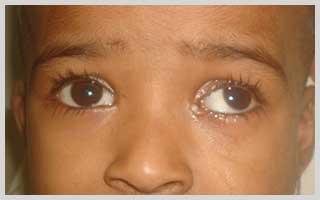Blocked tear ducts
A blocked tear duct is a fairly common and usually temporary problem that occurs in infants when the nasolacrimal duct—the passage that lets tears drain from the eye into the nasal cavity—becomes obstructed or is closed off.
Although the exact incidence of blocked tear ducts in Navi Mumbai is unknown, in general it occurs in approximately 5% of normal newborn infants. The blockage occurs most commonly at the distal end of the duct. There is no sex predilection and no genetic predisposition. The blockage can affect just one eye or both. The rate of spontaneous resolution is estimated to be 90% within the first year of life.
What are the symptoms of blocked tear ducts?
When an infant has a blocked tear duct, the eye looks wet or tears may spill over onto the cheek, even when he or she is not crying. There is often mucoid material, a mucus-like substance, on the edges of the eyelid. The skin surrounding the eyes is sometimes chapped. When pressure is applied over the inner corner of the eyes, there is a reflux of mucoid material from the punctum.
How is it treated?
Since the majority of cases resolve without treatment, most doctors suggest waiting to see if the duct opens on its own. There is spontaneous remission in 95 percent of cases by age of 9 months.
In the meantime, pediatric ophthalmologists typically recommend massaging over the lacrimal area to open up the obstruction in the tear duct, and may also prescribe an antibiotic eye drop to help reduce the discharge from the eye.
If the condition doesn’t resolve itself, a quick procedure, called probing is performed. A small thin metal instrument is passed through the nasolacrimal duct to open the membrane. This procedure cures more than 90 percent of the cases that haven’t resolved on their own.
In the rare situation that the probing doesn’t help, other measures, such as the placement of silicon tubes (intubation), using a balloon instrument to stretch the opening (ballon dilatation), or surgery (DCR) to create a new passage between the tear sac and the nose, can be done. The pediatric ophthalmologist would be able to guide you about the best procedure for your child.
To learn more about surgery for blocked tear ducts, click here…..


